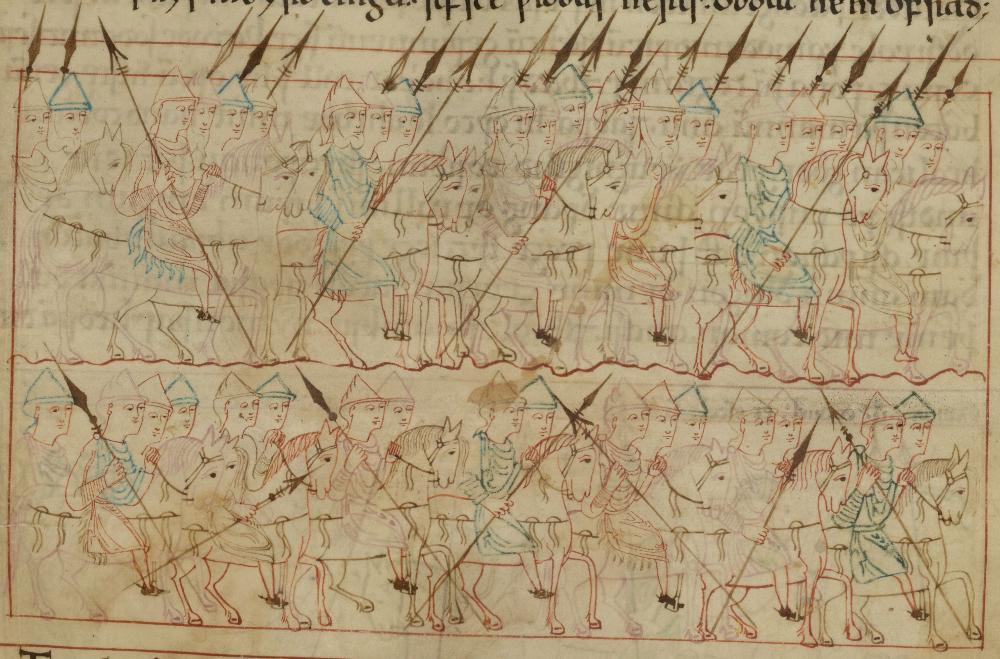Abram Pursued the Four Kings All the Way to Dan
British Library, MS Cotton Claudius B IV
Hexateuch
An Old English translation of the first six books of the Old Testament
 A larger image of 'Abram Pursued the Four Kings All the Way to Dan', in the Old English Hexateuch, British Library, MS Cotton Claudius B IV. |